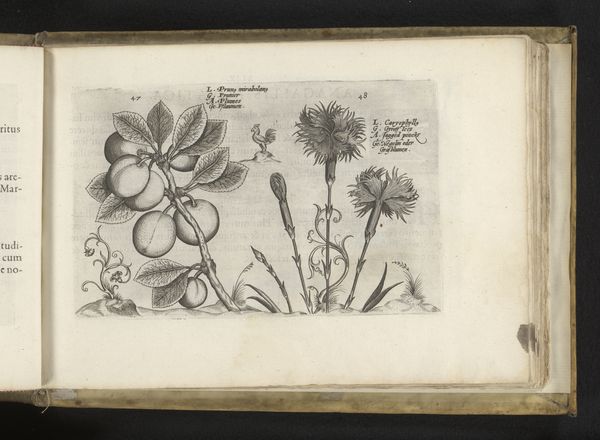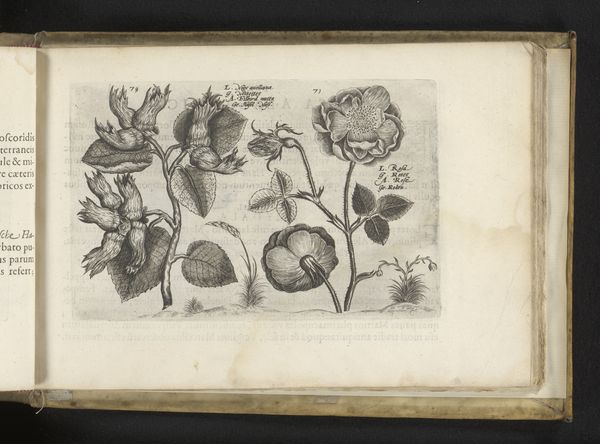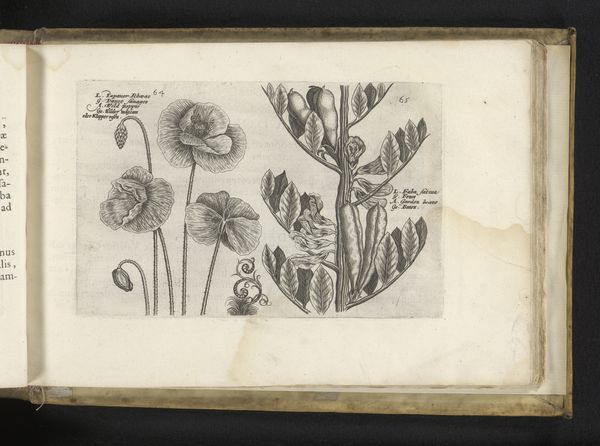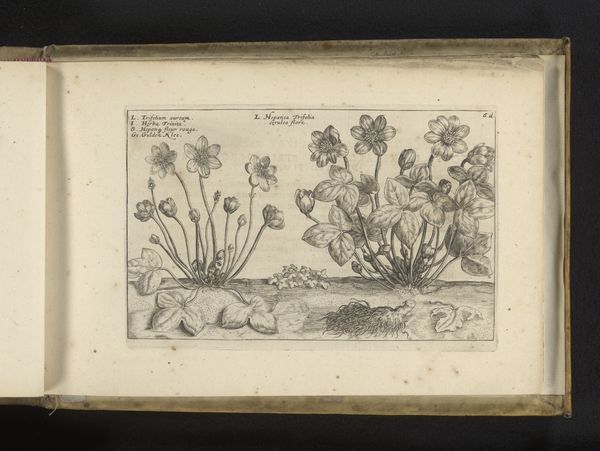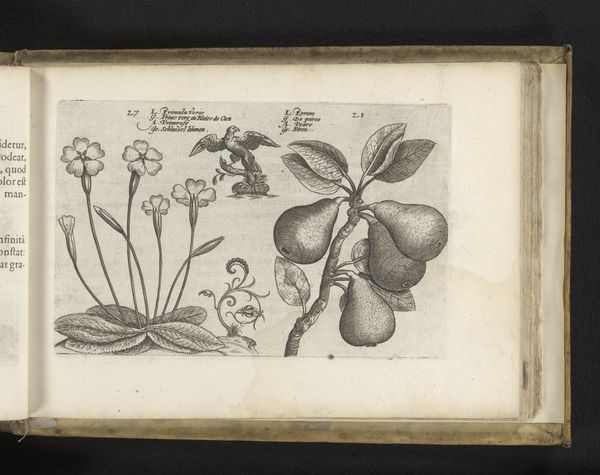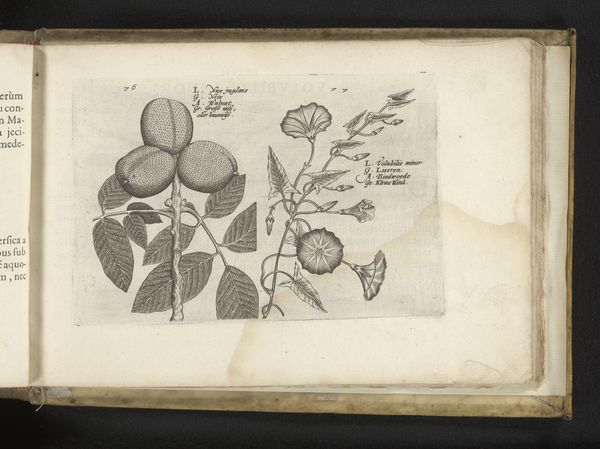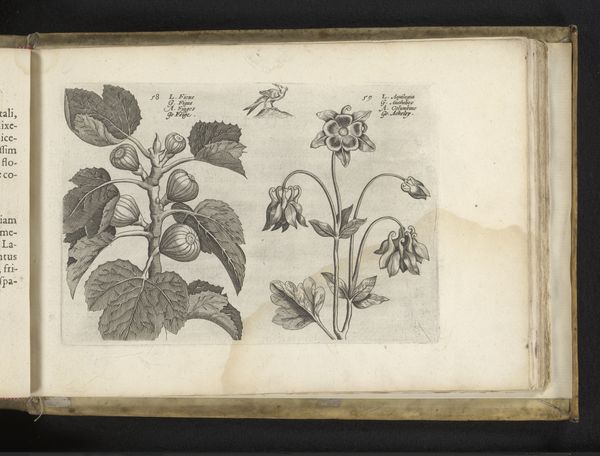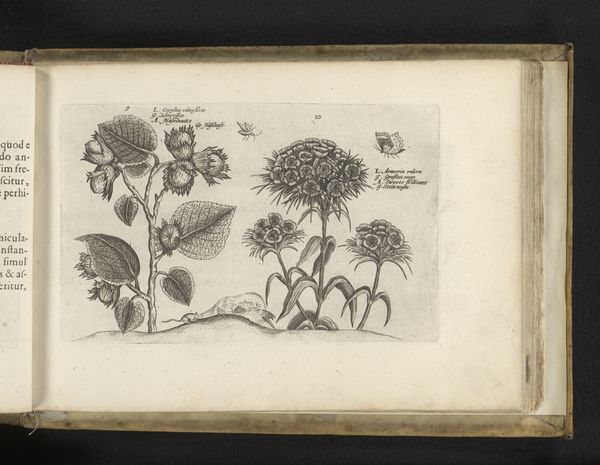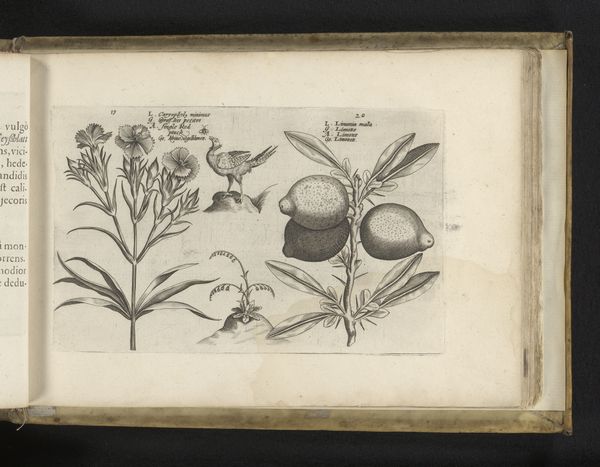
drawing, print, paper, engraving
#
drawing
#
aged paper
#
toned paper
# print
#
old engraving style
#
sketch book
#
flower
#
paper
#
11_renaissance
#
personal sketchbook
#
pen-ink sketch
#
pen and pencil
#
line
#
pen work
#
sketchbook drawing
#
sketchbook art
#
engraving
Dimensions: height 139 mm, width 202 mm
Copyright: Rijks Museum: Open Domain
This print of irises and hawthorn was made by Crispijn van de Passe the Younger, likely in the early 17th century, using an engraving process. Here, a design is etched into a metal plate, likely copper, with a tool called a burin. This painstaking process requires tremendous skill, as every line must be manually cut. The plate is then inked, and the surface wiped clean, leaving ink only in the incised lines. Paper is then pressed against the plate to pick up the ink, creating the print. The crisp, delicate lines and tonal variations show van de Passe's mastery of the technique. While seemingly simple, engraving involved intense labor and specialized knowledge, positioning it as both a craft and a mode of visual communication. The very act of creating such detailed botanical studies speaks to a culture increasingly interested in observing and classifying the natural world, fueled by both scientific curiosity and colonial expansion. This print reminds us that even seemingly straightforward images are the product of complex social and material processes.
Comments
No comments
Be the first to comment and join the conversation on the ultimate creative platform.
